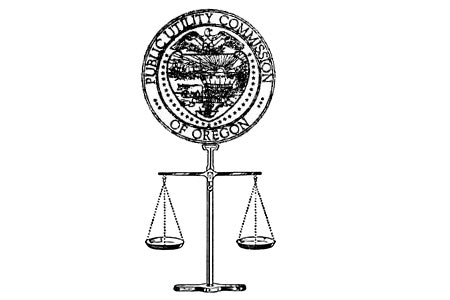PUC Rejects Pacific Power Rate Hike, Rates Going Down
Posted on January 5, 2021 by Bob Jenks
Tags, Energy

In a late December ruling, the Oregon Public Utility Commission (PUC) rejected many of the proposals made by Pacific Power in its 2020 rate case, the first rate case filed by the company since 2013. The PUC agreed with CUB that the company’s investment in the Jim Bridger coal fleet was imprudent. They rejected Pacific Power’s proposal to shift economic risk to customers and they cut the company’s profit margin. Instead of the 6 percent rate increase proposed by Pacific Power, the PUC ordered a rate decrease of 1.6 percent.
This was a large rate case with several issues in dispute. CUB was particularly pleased with the outcomes of the following issues:
Coal investment at Jim Bridger. In Pacific Power’s 2015 resource plan, CUB opposed the company’s proposed investment in a pollution control retrofit of the Jim Bridger plant. CUB believed that the company should consider phasing out the plant, as PGE did with the Boardman coal plant, as a cheaper alternative to retrofitting. In this 2020 rate case, Pacific Power was asking to add the cost of the retrofit to rates. CUB opposed this move, and offered our analysis showing that the company was imprudent by not exploring a phase-out of the plant. The PUC agreed with CUB, found that the utility had failed to pursue alternatives, and prohibited Pacific Power from earning a return on the investment.
Allocation of risk in power cost forecasting. Rates are set based on a forecast of costs. Power cost forecasts are only trued up (adjusted to reflect actual costs) in unusual circumstances where the forecasts are off by a wide margin and the utility is under- or over-earning by a significant amount. Pacific Power proposed to change this so that the true-up would happen regardless of its significance and the utility’s earnings. This would shift the economic risk of forecast errors from shareholders to customers. If this policy had been in place in 2020, Pacific Power would have been allowed to place a $45 million surcharge on Oregon customers’ bills to make up for errors in the 2019 forecast. But in 2019 shareholder earnings were above authorized levels, so the utility earned its expected profits regardless of the forecast error. CUB challenged Pacific Power’s proposal as unfair and unnecessary. The PUC agreed with CUB and rejected the company’s proposal to change this allocation of forecast risk.
Profit margin/Return on Equity. Part of Pacific Power’s rate case was a request to raise rates by $12 million per year to boost profits to Berkshire Hathaway, its parent company. Its authorized Return on Equity (ROE) was already greater than most other Oregon utilities, yet it asked for even higher profits. CUB strongly opposed this, and pointed out that the request was being made at a time when COVID-19 was creating a hardship for many customers. CUB, proposed that the Commission should instead reduce their profits by $12 million per year. The PUC ordered a $9 million reduction in ROE.
Reduced customer charge for multi-family housing. One element of Pacific Power’s filing was a request to lower the fixed monthly charge to customers living in multi-family housing, which makes sense since multi-family houses take less investment per customer to hook up to the grid. The only problem was that Pacific Power also asked to increase the monthly fixed charge for single-family homes. CUB was able to win an agreement to lower the fixed charges for multi-family houses without increasing the fixed charges for single family homes.
Time of use rates. Like a lot of utilities, Pacific Power offers a time-of-use rate option where rates change based on the time of day. This allows customers who opt in to move some of their usage to off-peak times of the day in order to save money. Pacific Power presented a redesign of its program, but CUB believed that it was too complicated and would make it difficult for customers to evaluate whether they could save money under the program. CUB offered an alternative that was simpler and would facilitate customers saving money on their bills. We were able to negotiate a time-of-use program that is much more customer friendly and will be available for customers later this year.
Wages, salaries, and incentives. The PUC has long used a standard process to forecast wages and salaries when forecasting utility rates. In addition, the PUC has a longstanding policy to disallow incentive pay to officers and to split other incentive pay between shareholders and customers. Pacific Power challenged these historic practices, asking the PUC to allow it to increase the forecast for wages and to have customers pay the costs of incentives. The PUC ultimately rejected these changes and reaffirmed the standard practices used in Oregon. This is important because if the PUC had changed these policies for Pacific Power, it would have had to do so for all utilities.
This was a long, difficult case, but the outcome was good for Oregon customers. It is rare that a utility requests a significant rate increase and ends up with a rate decrease. After a year as challenging as 2020 was, it is a pleasure for CUB to ring in 2021 with this good news.
To keep up with CUB, like us on Facebook and follow us on Twitter!





01/05/21 | 1 Comment | PUC Rejects Pacific Power Rate Hike, Rates Going Down